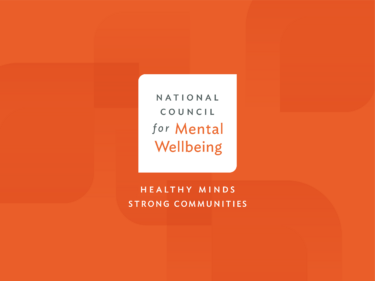BY THE NUMBERS
Suicide is now the 8th leading cause of death of children 5 to 11. According to a recent study, rates of suicide attempts and deaths among children have been increasing over the past decade. Researchers reviewed the characteristics of child suicide deaths and helped identify risk factors present as well as provide future avenues of intervention and research.
Main Stories:
- New Medicaid Guidance for Community-based Mobile Crisis Services
- Investments to Implement 988
- DOJ Awards $34 million to Support Community Crisis Response
- HHS Proposes Changes to ACA Benefit and Payment Parameters for 2023
New Medicaid Guidance for Community-based Mobile Crisis Services
New guidance was recently released by the Centers for Medicare and Medicaid Services (CMS) to promote access to mobile crisis services under Medicaid. The American Rescue Plan authorized state Medicaid programs to integrate community-based mobile crisis intervention services. CMS will provide states with additional resources and tools to help design programs that work for their communities and enhance programs where they already exist. This guidance follows $15 million in planning grants awarded to 20 states for community-based mobile crisis intervention services under Medicaid last September.
Investments to Implement 988
Last month, the Department of Health and Human Services (HHS) announced $282 million in federal investments to support the transition of the National Suicide Prevention Hotline to a three-digit dialing code – 988. HHS will invest $177 million to strengthen and expand existing Lifeline operations and infrastructure, including a centralized chat and text response and special services such as a sub-network for Spanish-speakers. The remaining $105 million will be used to build staffing levels across local crisis call centers in states.
DOJ Awards $34 Million to Support Community Crisis Response
The Department of Justice recently awarded $34 million in grants to help support partnerships between the justice system, mental health professionals, and community providers. The grants are designed to help reduce arrests of individuals in mental health or substance use crises, divert individuals from the justice system to get treatment, and provide other support services to those in need. Of these funds, $18.3 million will go to the Law Enforcement Behavioral Health Response Program to support cross-system collaboration of law enforcement and behavioral health professionals. $11.9 million will go to the Justice and Mental Health Collaboration Program to support social service partnerships who respond to individuals with mental health and substance use disorders. Further, $2.3 million will be awarded to support the training of law enforcement and correctional officers to interact with individuals who have behavioral health conditions under the Collaborative Crisis Response Training Program.
HHS Proposes Changes to ACA Benefit and Payment Parameters for 2023
The Department of Health and Human Services issued its proposed payment parameters under the Patient Protection and Affordable Care Act for 2023, including updates to premium and risk adjustment rates in the Exchanges. Further, the proposed rule would require insurers to offer at least one standardized plan and allow CMS to differentiate standardized from non-standardized plans to clarify plan options for consumers on the healthcare.gov platform. Click here to read an analysis of the proposed rule.
Additional Stories:
ADVOCACY CORNER
Webinar on Congressional Advocacy. The Congressional Management Foundation will hold a webinar on January 18 at 3:00 PM EST about meeting with members of Congress. This webinar will cover how to research legislators, develop personal advocacy stories, and tips on what you should do before you meet with policymakers. For more information and to register, click here.
HAPPENING ON THE HILL
New GAO Report on COVID-19 and Behavioral Health. The Government Accountability Office (GAO) released a report on COVID-19 and behavioral health of higher-risk populations. GAO found six populations that may be at higher-risk for new or exacerbated behavioral health symptoms or conditions related to the COVID-19 pandemic. These groups include young adults, children and adolescents, healthcare workers, people facing financial distress, people from certain racial and ethnic groups, and people with pre-existing behavioral health conditions. To read the highlights of the full report, click here and the full report here.
Guest Author
Associate, Federal Policy
The National Council

